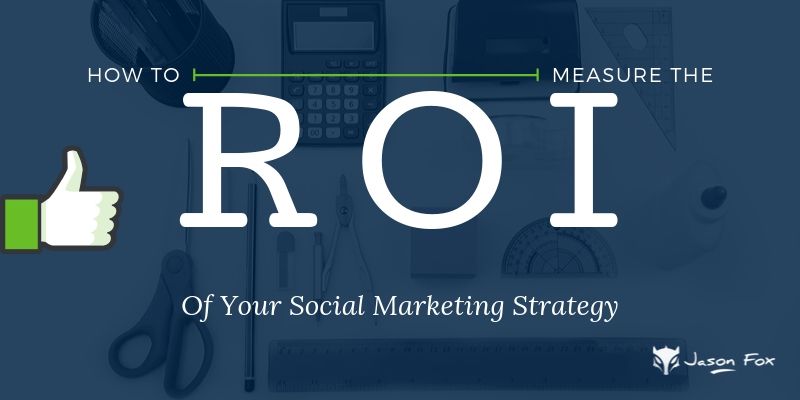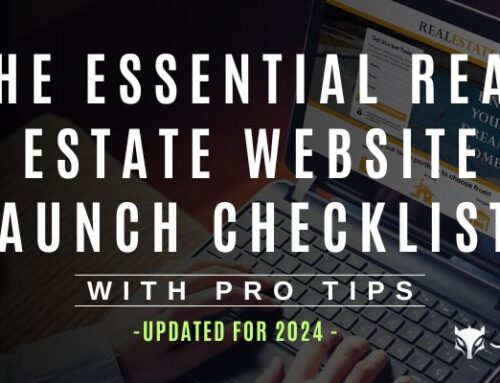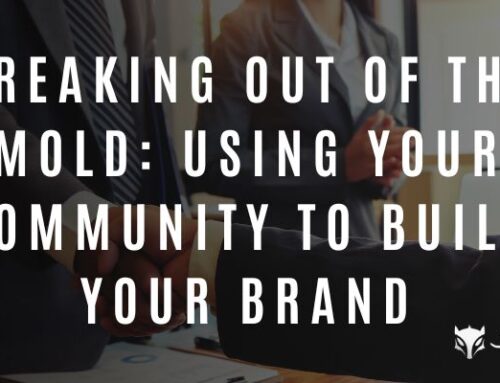To compete as a real estate agent in the digital age, it’s no longer enough to simply put up a big sign in town, or rent out a billboard, to promote your name, generate leads, and drive sales.
Instead, you need to have a multi-pronged approach that starts with your website, includes SEO, specifically local SEO, and also puts heavy emphasis on social media.
Real Estate Agents need to have a multi-pronged approach that starts with your website, includes SEO, specifically local SEO, and also puts heavy emphasis on social media. Click To TweetThis is because we as a tech-savvy population spend countless hours on social media. For you in the real estate business, know that 99 percent of millennials and 90 percent of baby boomers start their search for a home online.
This doesn’t always mean social media, but it’s certainly a part of it, which is why you need to make it a central feature of your marketing strategy.
However, designing and implementing a social media strategy takes time and effort, so when you do it, you must make sure you’re monitoring your progress to ensure you’re not wasting valuable energy on something that’s not working, and also to provide you with a plan for how to improve.
This means measuring the ROI of your social media marketing strategy. But given the sometimes intangible nature of the results a social strategy can provide, this is sometimes easier said than done.
Below you will find everything you need to know about how to measure the ROI of your social marketing strategy.
Step 1: Determine Your Objectives and KPIs
Measuring ROI is pointless if you don’t first determine what type of return you’re hoping to get from your social strategy. For example, are you hoping to:
- drive more traffic to your website?
- Generate more leads?
- Drive sales?
- Or simply grow your social following so that you can further establish yourself as an authority in the field?
Answering these questions is important because it will tell you what your Key Performance Indicators (KPIs) are. These are the metrics you will be using to actually measure the impact of your social strategy.
Translating your objectives into KPIs is usually pretty straightforward. Typically, you can divide your KPIs into three categories: reach, engagement, and conversion. Here are some of the more common KPIs in marketing:
- Followers, subscribers, impressions, etc. are effective for analyzing REACH
- Shares, likes, comments, retweets, etc. are all good ways to measure ENGAGEMENT
- Sales, sign-ups, downloads, clicks, quotes, referrals, etc. are all useful metrics for CONVERSIONS
For example, if your hope is to drive more traffic to the site, the KPI would be the number of visitors to your site, and to zero in on your social strategy, it would be the number of people who visited the site as a result of something they saw on social media. Usually you can measure this by looking at the number of people who clicked on your social content and visited the site.
This would be an example of measuring conversions since your goal is to get people who see your presence on social media to react by clicking on a link and visiting your website.
Setting SMART Goals
Anyone with a marketing background is likely familiar with the SMART acronym, which is a way of reminding you how to make your objectives.
They should be Specific, Measurable, Achievable, Realistic, and Timely.
Social Media goals should be SMART, they should be Specific, Measurable, Achievable, Realistic, and Timely. Click To TweetThis is important because it will make your measuring efforts more effective, and it will also help you design a strategy that has a chance to actually work.
If you say, “we are going to double website traffic,” that’s great, but by when? And is that really a possibility? Instead, it’s better to say, “we’re going to increase traffic to the website from social media by 25 percent over the net six months.”
So, when setting your objectives for your social media campaign, follow these steps:
- Determine the area you want to improve in
- Figure out how much of an improvement you think is possible and want to see, and while you’re doing this, be sure to establish some benchmarks (indicators of your current progress) so that you have something to compare with the new data that comes in after you implement your social strategy.
- Identify the KPIs you need to measure to follow the progress of your strategy as it’s implemented.
Step 2: Quantify Costs
Once you’ve figured out what it is your measuring, you need to determine how much money you are spending to drive a given action.
However, for this to be accurate, you need to make sure you’re including all of the costs that led up to that action.
This is the “investment,” or the “I,” part of the ROI you’re planning to measure.
For example, if you’re hoping to use social media to drive sales, you will need to keep track of the following:
- What did you spend to get exposure on social media? Did you buy ads? If so, how long did you spend creating the ad? If you’ve simply posted something and are promoting it, how much are you spending to promote it?
- How much time are you putting into converting the leads you’ve generated from social media into sales? For example, does someone on your team need to spend a good part of their day responding to the queries coming from social media? Do you need to hire a new team member? Do you need to buy any additional tools to deal with these new requests?
Of course, a lot of this is simply the cost of doing business, but when you’re launching a social media campaign and want to find out how it’s truly impacting the business, you need to get granular.
This will help uncover how much these efforts are truly adding to your business and it will help steer you towards where you need to make changes and improvements.
Step 3: Determine the Cost of a Given Action
Once you get to this point, the next step in calculating ROI is figuring out how much you’re spending to drive what you were targeting when you launched the campaign.
To do this, take the amount you’ve spent putting together a campaign and then divide it by the number of clicks, conversions, leads, shares, etc. you’ve generated as a result of your social efforts.
So, for example, let’s say you spend a total of $1,000 developing content and promoting it on social media with the goal of boosting traffic to your website. After the campaign, you find the campaign has helped boost traffic by 12 percent, which equates to 1,200 new unique visitors. This means you’ve spent about $0.83 to for each new user you’ve acquired on social media.
But at this point, this number is a bit arbitrary. Is $0.83 per new user good? Is it worth it?
This brings us to the next step in the process of determining the ROI of your social strategy, but these numbers will actually end up being more relevant later on in the measuring process.
Step 4: Determine Impact
At this point, you need to ask yourself: what’s the impact this campaign is having on the business?
Answering this question is essential because it will help you determine the true ROI of your social strategy.
To return to the example above, let’s say you’re spending $0.83 to drive unique visitors to your website. You’ve set it up so that those who click to your site wind up on a landing page designed for conversion. Specifically, you’re trying to get them to fill out a contact form so that you can reach out to them about their home buying/selling needs. Then, hopefully, you have some numbers on how many of these leads you can convert into sales.
Using these numbers, you should be able to figure out the impact of your social efforts on the business. For example, let’s say you get 10 percent of the people who come to your site to fill out a contact form, and 2 percent of those become clients. This means, that of the 1,200 new visitors to your site that have come from social media, you can expect 2.4 of them to become clients.
Then compare this to what you stand to make from these clients. For example, if each sale brings in an average of $10,000 in commission, then you can say this social media campaign helped you generate $24,00 in additional income, after only investing $1,000. That’s pretty good.
Of course, the numbers might not always work out this way. Your social campaign could drive way less traffic, or way more, or it could attract people outside the scope of your target audience, which means it won’t have as profound an impact on the bottom line as the example mentioned above.
Also, if you’ve decided to use social media to target less tangible objectives, such as engagement, then you may find it difficult to equate this to cold hard cash. Posting content and watching it go viral is no doubt important, but it’s not everything. But this is why it’s so important to set SMART goals.
A SMART goal would attach boosting engagement with some sort of revenue target, and if you don’t hit this, you can be sure you’re either targeting the wrong kind of engagement (many shares/clickbait vs. fewer but more meaningful shares.), or that engagement isn’t the way to try and boost revenue.
All of this is what makes the final step in your plan to measure social ROI, evaluation, so important.
Step 5: Evaluate and Optimize
Once you’ve had the chance to dig into all the numbers, now it’s time to make a decision.
If the campaign met or exceeded expectations, great. Now what?
- Do you want more of the same?
- Or is there something you can do to make it even more effective?
If the social strategy you implemented did not produce the results you wanted, why not?
- Was it because the cost of acquiring new leads was too expensive?
- Or did your content simply fall in front of the wrong eyes, meaning it wasn’t targeted correctly?
- Or, is your target audience simply not interested in social media, meaning you should scrap this strategy all together?
Here’s where all the hard work you put into generating data will pay off.
For example, say you were hoping to boost revenue by 25 percent, but you fell short because your campaign didn’t generate enough users.
Well, since you now know how much you need to spend to acquire a new user ($0.83 per user, according to the example above), you now know how much you need to spend to reach that target, and if that is something you can and want to do.
A good approach to measuring social ROI will help you answer that question with cold hard data, which will make it easier for you to know what the right decision is.
The Next Step
Essentially, all this process does is set you up for the next campaign.
Your rigorous approach to measuring social ROI has helped you crystallized your objectives and also understand much more clearly what works and what doesn’t.
Now, you can take what you’ve learned and apply it to your next campaign. Continue measuring in the same way, and over time, you will begin to see continuous improvement, which leads to a more optimized business, and, most importantly, expanding profits.







Leave A Comment